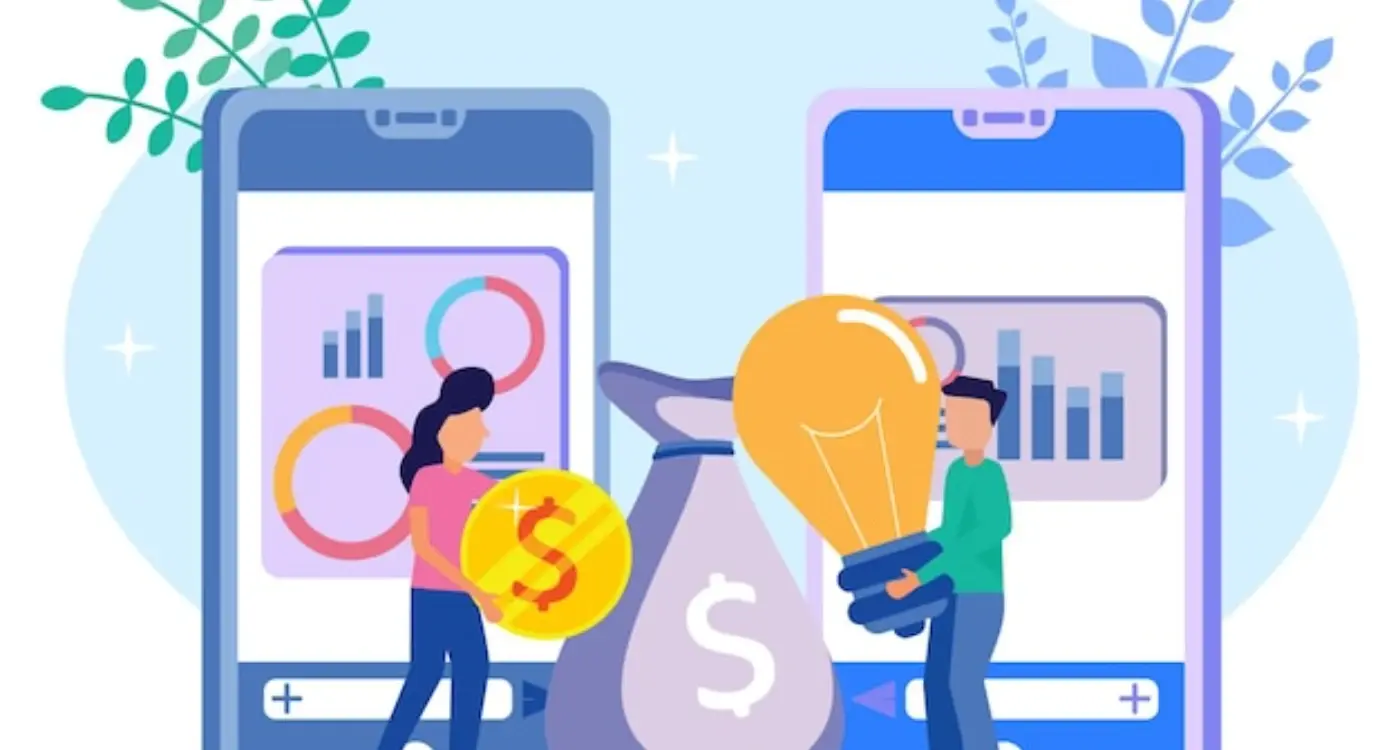How Much Should You Save for App Updates Each Year?
When was the last time you checked how much you've spent on app updates this year? I'll bet most business owners couldn't tell you off the top of their head—and that's a problem. After building apps for nearly a decade, I've seen too many companies treat app maintenance like an afterthought, only to get hit with unexpected bills that could have been planned for months in advance.
Here's what I've learned: successful apps aren't just built once and forgotten. They need constant care, regular updates, and ongoing investment to stay competitive. But here's the thing that catches most people off guard—yearly app expenses can easily run anywhere from 15% to 50% of your original development costs. That's not a small chunk of change, especially if you're running a tight budget.
The mobile landscape changes fast. Operating systems get updated, security vulnerabilities need patching, user expectations shift, and your competitors aren't standing still. I've worked with clients who thought they could skip updates for a year or two to save money... it never ends well. Their apps start crashing on new devices, users complain about bugs, and suddenly they're facing a much bigger bill to fix everything at once.
The cost of not updating your app is always higher than the cost of keeping it current
Smart business owners plan ahead for app update costs just like they budget for any other ongoing expense. Whether you're managing a simple business app or a complex platform, understanding what you'll need to spend each year helps you make informed decisions about features, timing, and resource allocation. Let's break down exactly what you should be setting aside.
Most clients I work with think app maintenance is just fixing the odd bug here and there. They couldn't be more wrong! The truth is, there are loads of hidden costs that catch people off guard—and I mean properly blindside them.
First up, there's the server costs that nobody talks about. Your app's backend doesn't run on fairy dust; it needs servers, databases, and monitoring tools. These costs grow with your user base, which is brilliant for business but murder on your budget if you haven't planned for it. I've seen apps go from £50 a month in server costs to £500 overnight after a viral marketing campaign.
Then there's the sneaky stuff. App store fees, SSL certificates that need renewing, analytics tools that start charging once you hit certain user numbers. Those "free" services you used during development? They're not so free anymore when you've got thousands of active users.
Third-party integrations are another nightmare. Payment processors, mapping services, cloud storage—they all have their own pricing tiers and terms. When Stripe changes their fee structure or Google Maps updates their pricing, you feel it directly in your maintenance budget.
And here's something that really gets me: the hidden cost of technical debt. All those shortcuts and "we'll fix it later" decisions during development? They come back to haunt you during maintenance. What should be a simple update turns into a major overhaul because the original code wasn't built to handle it.
Don't forget about compliance costs either. GDPR audits, security assessments, accessibility updates—they're not one-time expenses. You'll need legal reviews, security consultations, and sometimes complete feature rewrites to stay compliant with changing regulations. This includes ensuring proper handling of user data deletion requests and other privacy requirements that can impact your development schedule.
Setting Your First Year Budget
Right, let's talk numbers. After eight years of watching clients either overspend wildly or—more commonly—budget way too little for their first year, I've got some pretty clear guidelines that actually work in the real world.
For your first year post-launch, you should budget roughly 20-25% of your initial development cost for updates and maintenance. So if you spent £50,000 building your app, you're looking at around £10,000-£12,500 for year one. I know that might sound like a lot, but trust me—it's better to have it and not need it than the other way around.
Set aside your maintenance budget in a separate account the moment your app launches. It's too easy to "borrow" from it for marketing or other expenses when cash flow gets tight.
Breaking Down Your First Year Costs
Here's how that budget typically splits up: about 40% goes to bug fixes and performance improvements (these always crop up once real users start hammering your app), 30% for small feature additions based on user feedback, 20% for platform updates—iOS and Android release new versions constantly, and 10% as a buffer for emergencies.
The thing is, your first year is unique. You'll discover issues you never anticipated during testing, users will request features that seem obvious in hindsight, and you'll need to respond quickly to stay competitive. I've seen too many brilliant apps lose momentum because they couldn't afford to fix problems or add requested features.
Don't forget to factor in your development team's availability too. If you're planning to use the same developers, book their time in advance—good developers get busy fast, and you don't want to be stuck waiting three months to fix a critical bug.
Right, lets talk about feature updates—probably the most exciting part of your app's journey but also where budgets can spiral out of control if you're not careful. I've seen too many clients get caught up in the "wouldn't it be cool if..." mindset without thinking through the costs properly.
Here's the thing about feature updates: they're not just nice-to-haves anymore. Users expect apps to evolve, improve, and add new functionality regularly. An app that stays static for six months? It starts feeling stale. But here's where it gets tricky—each new feature isn't just a one-time cost.
Planning Your Feature Pipeline
I always tell clients to budget around 20-30% of their original development cost annually for meaningful feature additions. Sounds like a lot? Well, consider this: every new feature needs design work, development time, testing, and ongoing maintenance. That "simple" social sharing feature might cost £3,000 to build but adds another £500-800 yearly to your maintenance burden.
The smart approach? Plan your features in quarterly releases rather than random additions. This gives you predictable costs and lets you batch related updates together—much more efficient than piecemeal development. I've found that clients who plan three features per quarter tend to spend about 25% less than those who add features sporadically.
User-Driven vs Business-Driven Features
Not all features are created equal, budget-wise. User-requested features often have higher success rates but can be complex to implement. Business-driven features (like new payment methods or analytics) might be simpler technically but require more third-party integrations. Both have their place, but knowing the difference helps you allocate resources properly and avoid those painful budget surprises six months down the line.
Security and Bug Fix Expenses
Right, let's talk about the stuff that keeps app developers up at night—security vulnerabilities and those pesky bugs that seem to multiply when you're not looking. In my experience, this is where most people get their budgeting completely wrong because they treat security and bug fixes like they're optional extras rather than core maintenance costs.
Security updates aren't something you can schedule for next quarter when the budget looks healthier. When Apple or Google releases a security patch, or when someone discovers a vulnerability in one of your third-party libraries, you need to act fast. I typically tell clients to set aside 15-20% of their annual maintenance budget specifically for security-related updates. Sounds like a lot? Well, the cost of a security breach is infinitely higher than the cost of prevention.
The average cost of a data breach for mobile apps can reach £3.2 million, making security updates one of the best investments you'll ever make in your app's future
Bug fixes are a different beast entirely. Sure, you'll catch most issues during testing, but real users have this magical ability to break your app in ways you never thought possible. I budget around £2,000-5,000 annually for bug fixes on a typical consumer app, though this varies massively depending on your app's complexity and user base size.
Here's what actually happens: you'll get user reports about crashes on specific device models, weird behaviour with certain OS versions, or integration issues with other apps. Each of these requires investigation time, development work, and testing before deployment. The key is having a reserve fund ready because bugs don't wait for convenient timing—they usually surface right when you least expect them.
Platform Update Requirements
Apple and Google don't just sit around twiddling their thumbs—they're constantly updating iOS and Android, and that means your app needs to keep up. I've seen plenty of apps get pulled from the stores because they weren't compatible with the latest operating system updates. It's honestly one of the most overlooked costs in app maintenance budgets.
Here's the thing; both platforms typically release major updates once a year, plus several smaller updates throughout. Each one can potentially break something in your app or introduce new requirements you need to follow. Apple is particularly strict about this—they'll give you a deadline to update your app, and if you miss it? Well, let's just say they're not known for their flexibility.
What Platform Updates Actually Cost
The cost varies depending on how much your app relies on platform-specific features, but here's what you should budget for each major platform update:
- Simple apps with basic functionality: £1,000-2,500 per platform
- Apps with moderate complexity (camera, location, payments): £2,500-5,000 per platform
- Complex apps with advanced features: £5,000-10,000+ per platform
- Testing across different devices and OS versions: £500-1,500
- Emergency fixes if something breaks unexpectedly: £1,000-3,000
Don't forget that you're maintaining both iOS and Android versions (assuming you have both), so double these figures. The good news? Not every update will require major changes to your app. Some years you might get away with minor tweaks, while others—like when Apple introduced App Tracking Transparency—require significant rework.
My advice? Set aside at least £3,000-6,000 annually for platform updates, regardless of your app's complexity. It's better to have the money sitting there unused than scrambling to find funds when Apple gives you 30 days to comply with new privacy requirements.
Third-Party Service Costs
Right, let's talk about third-party services—because your app probably doesn't live in isolation, does it? Most apps I work on rely on external services for things like payment processing, analytics, push notifications, cloud storage, and user authentication. These services charge monthly or yearly fees that can add up quickly.
Payment processors like Stripe or PayPal typically take 2.9% plus 30p per transaction, but they also have monthly fees if you're using their advanced features. Analytics services might start free but once you hit certain user thresholds, you're looking at £50-200 per month. Push notification services? Same story. Cloud storage costs can really surprise clients—what starts as £10 monthly can easily become £100+ as your user base grows.
Planning for Price Increases
Here's something that catches people off guard: third-party services increase their prices regularly. I've seen analytics platforms double their fees overnight (well, with 30 days notice, but still). When you're budgeting for the year, add at least 15-20% buffer for price increases across all your services.
You also need to factor in usage-based pricing. If your app takes off, your costs will scale with success. A client of mine had their cloud storage bill jump from £25 to £300 monthly when their photo-sharing feature went viral. Good problem to have, but it nearly broke their budget.
Keep a spreadsheet of all your third-party services with renewal dates, current costs, and usage limits. Set calendar reminders three months before renewals to review alternatives—switching services takes time and you don't want to be rushed into expensive renewals.
Don't forget about compliance services either. GDPR compliance tools, security scanning services, and accessibility testing platforms all cost money but they're not optional if you want to operate professionally.
Scaling Your Maintenance Budget
Here's where things get interesting—and a bit more complex. As your app grows and attracts more users, your maintenance budget needs to grow with it. I mean, it makes sense when you think about it, but so many people get caught off guard by this reality.
When you've got 1,000 users versus 100,000 users, everything changes. Your server costs go up, you need better monitoring tools, and frankly, when something breaks it affects a lot more people. That means fixing things becomes more urgent and sometimes more expensive.
Growth Triggers for Budget Increases
There are specific milestones where you'll need to bump up your maintenance spending. When you hit 10,000 active users, expect your costs to increase by about 30-50%. At 100,000 users? You're looking at doubling or even tripling that original budget.
But it's not just about user numbers. Adding new features means more things that can break—each new feature typically adds 10-15% to your annual maintenance costs. And if you're expanding to new markets or adding new languages, well, that's more complexity to manage and maintain.
The Smart Scaling Approach
Don't wait until you're drowning to increase your budget. I always tell clients to review their maintenance budget every six months during growth phases. Look at your user numbers, feature additions, and any performance issues you've had.
A good rule of thumb? For every 50% increase in active users, plan to increase your maintenance budget by 25-30%. Its not a perfect formula, but it'll keep you in the right ballpark and prevent those nasty budget surprises that nobody wants to deal with.
Common Budgeting Mistakes to Avoid
I see the same budgeting mistakes happen over and over again, and honestly? Most of them could be avoided with a bit of forward planning. The biggest one is treating app updates like an optional expense—like something you can just skip if money gets tight. But here's the thing: skipping updates doesn't save you money; it actually costs you more in the long run because you end up dealing with bigger problems later.
Another mistake I see constantly is only budgeting for the fun stuff. New features, fancy animations, that cool integration you saw in a competitors app. But what about the boring maintenance work? Security patches, bug fixes, performance improvements—these aren't glamorous but they're absolutely necessary. I'd say roughly 60% of your annual app update costs should go towards maintenance, not shiny new features.
The most expensive app update is the one you don't plan for
Underestimating Platform Changes
Apple and Google don't ask for your permission before they change their rules. When iOS 14.5 dropped with App Tracking Transparency, loads of businesses suddenly had to rebuild their analytics systems. That wasn't a "nice to have" update—it was comply or get kicked out of the App Store. Always keep 20-30% of your budget reserved for these surprise platform requirements.
The Monthly vs Yearly Trap
Some clients try to spread app update costs evenly across twelve months, but that's not how development works. You might spend nothing for three months, then need a big chunk for a security update, then nothing again. Set aside your full yearly budget upfront and resist the urge to spend it on other things when it looks like you won't need it. Trust me, you will.
Look, I get it—budgeting for app maintenance isn't the most exciting part of running an app business. But after eight years of watching clients struggle with unexpected costs (and others who planned properly and thrived), I can tell you that getting this right makes all the difference between a sustainable app and one that slowly dies from neglect.
The key takeaway here? There's no magic number that works for everyone. A simple utility app might need 15-20% of its original development cost annually, while a complex social platform could easily require 30-40% or more. What matters is understanding your app's specific needs and planning accordingly.
Start with the basics—security updates, bug fixes, and platform compatibility. These aren't optional; they're the cost of staying in business. Then layer on your feature updates, third-party service costs, and a buffer for the unexpected stuff that always seems to pop up. And yes, there will always be unexpected stuff!
Remember, your maintenance budget should grow with your app. What works in year one won't cut it in year three when you've got ten times more users and twice as many features. Plan for that growth from day one.
Most importantly, don't treat maintenance as an afterthought. The apps that succeed long-term are the ones where the owners view ongoing investment not as a necessary evil, but as what it really is—the fuel that keeps your app competitive, secure, and valuable to users. Because at the end of the day, a well-maintained app isn't just surviving in the marketplace—it's actually thriving in it.
Share this
Subscribe To Our Learning Centre
You May Also Like
These Related Guides

How Should You Budget for Post-Launch App Maintenance?

How Do You Save Money on App Updates?



